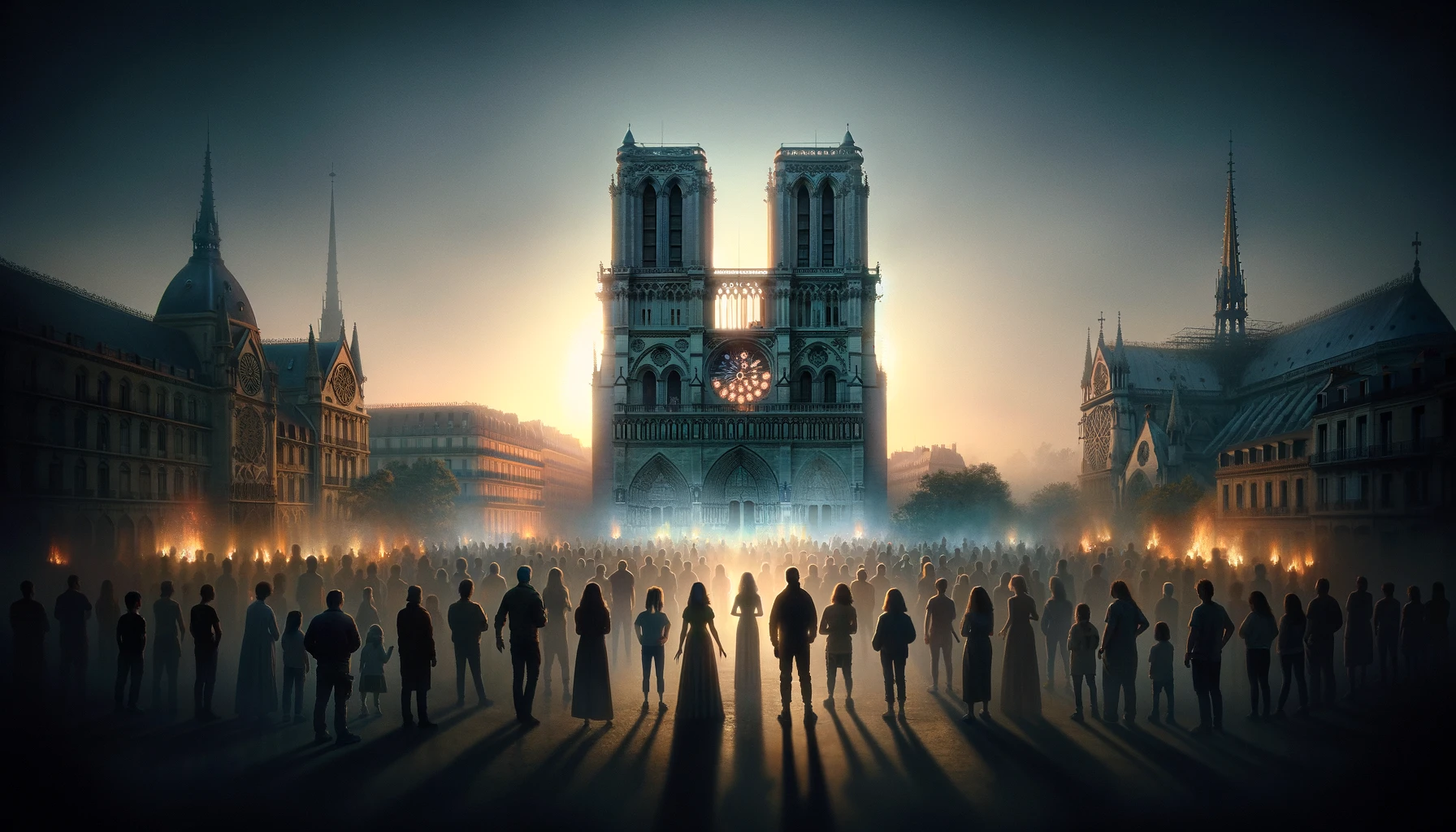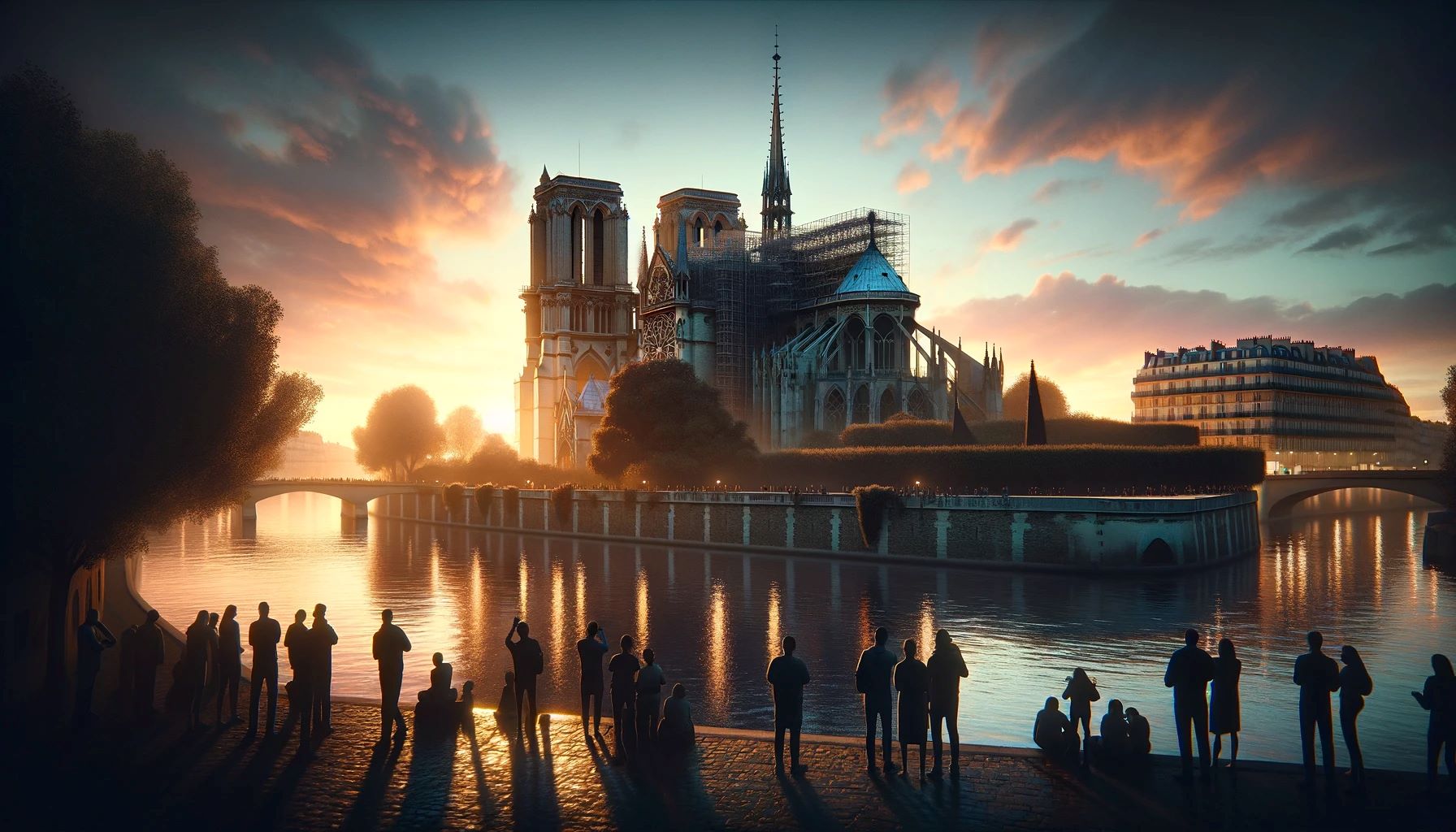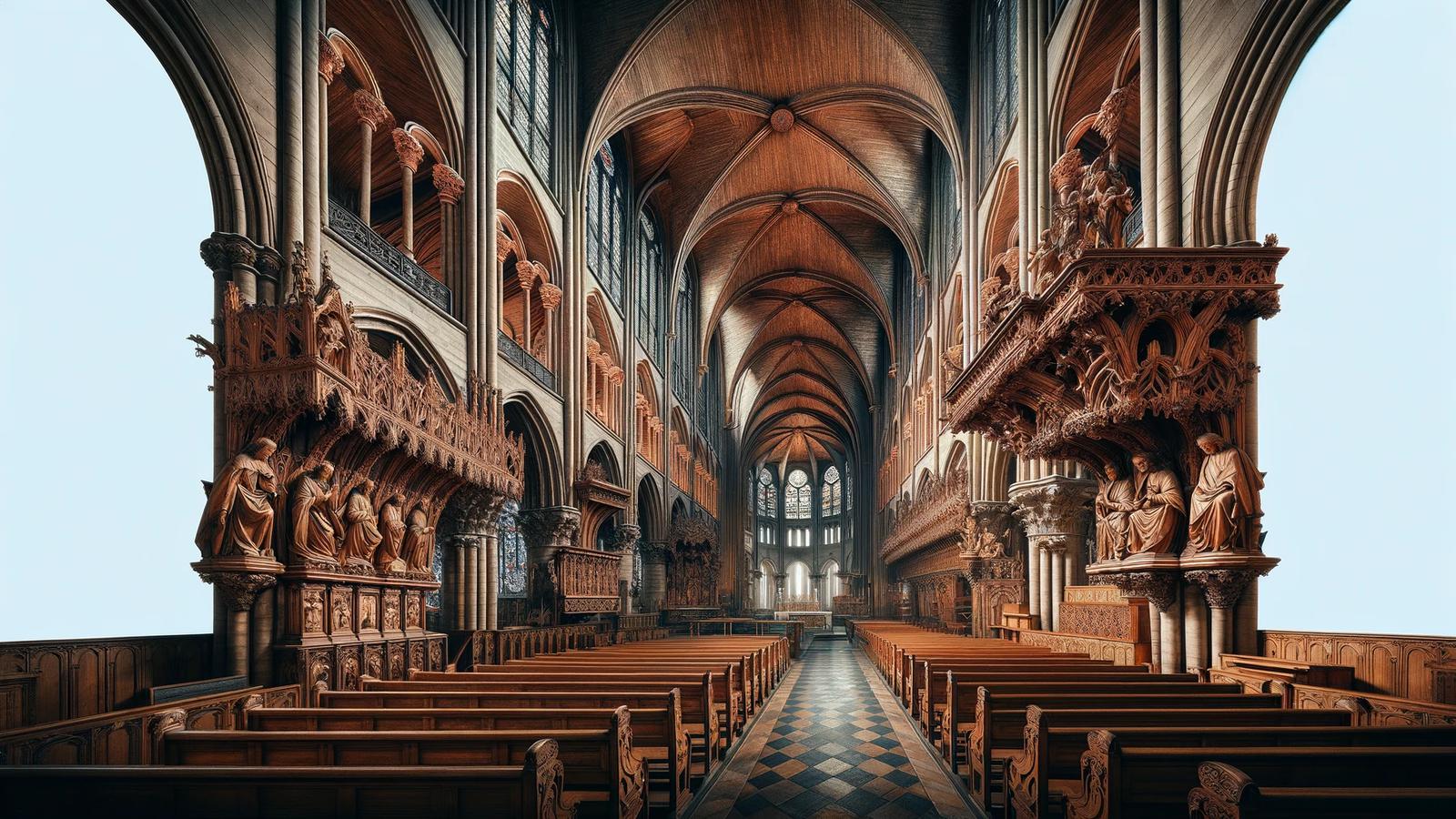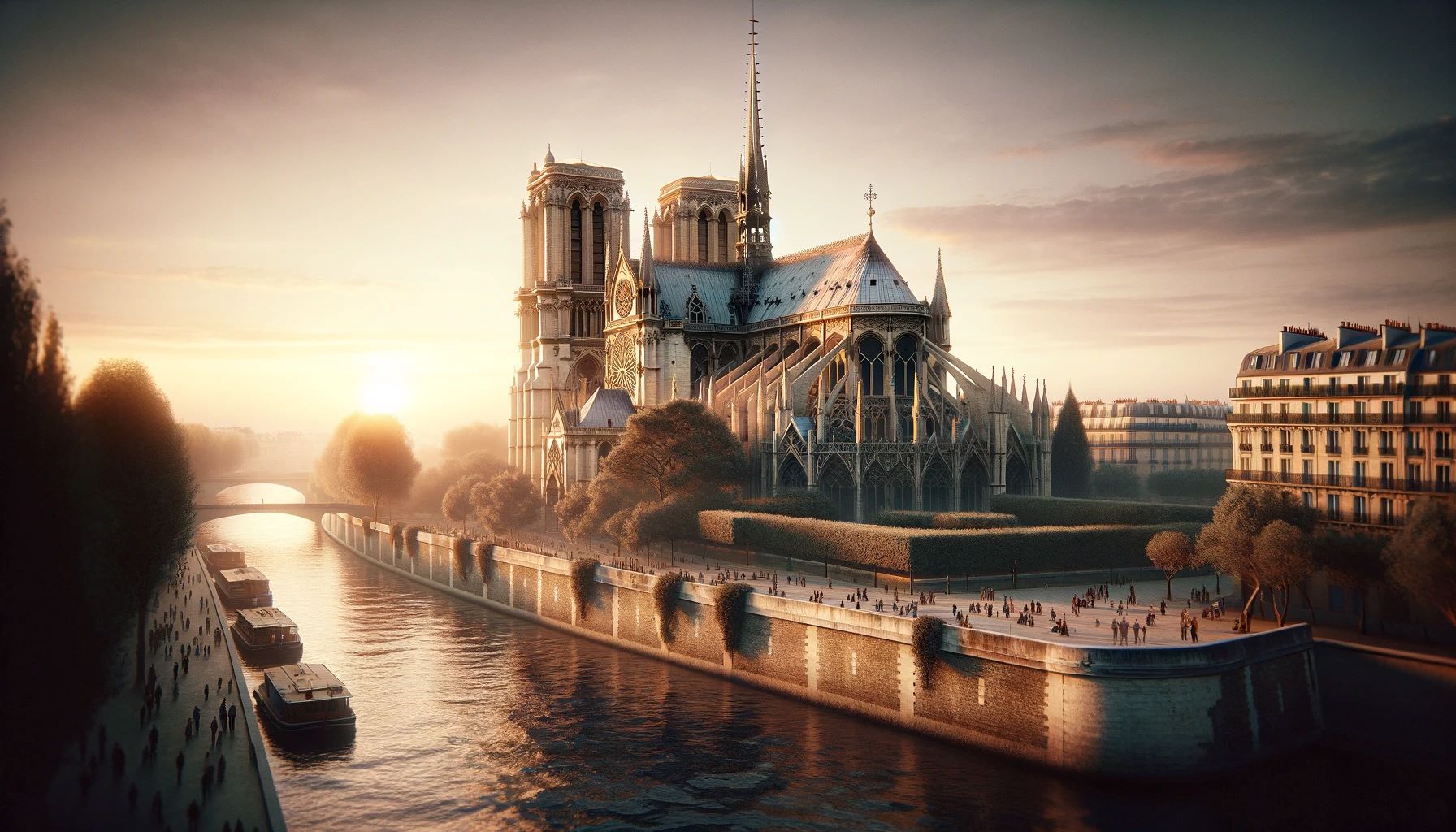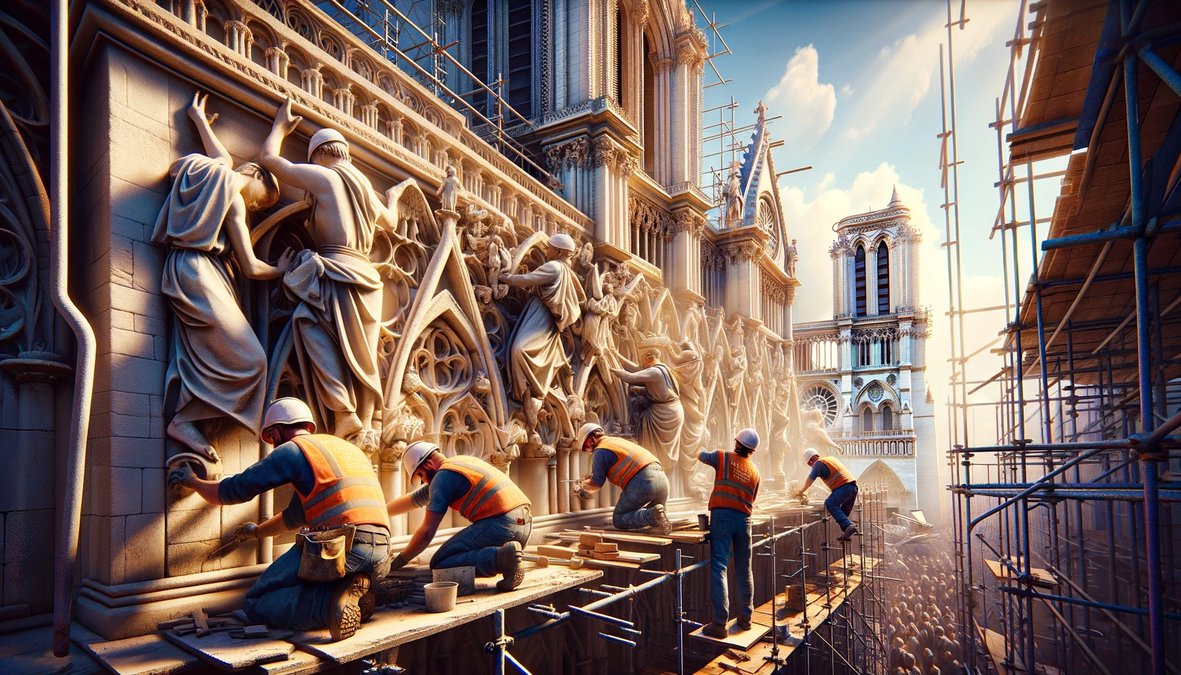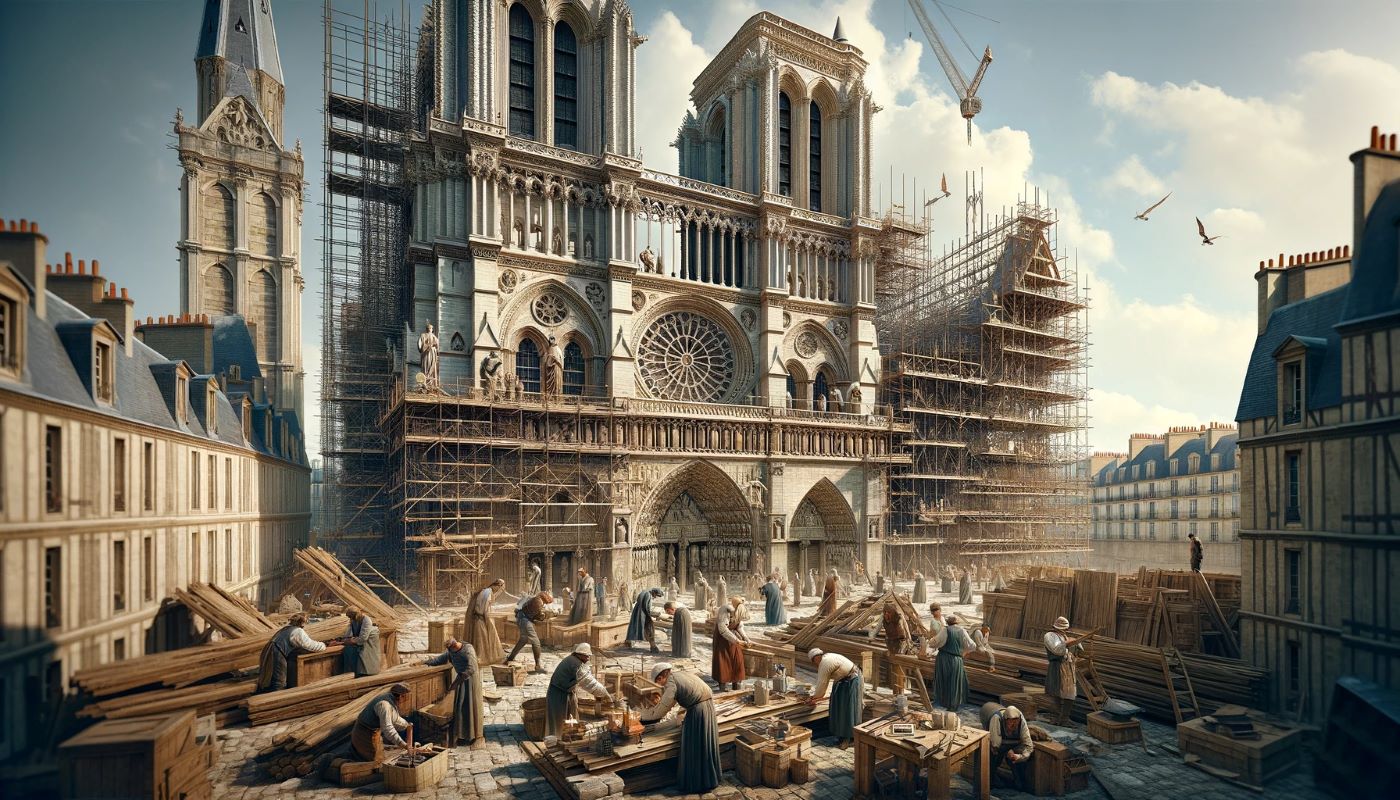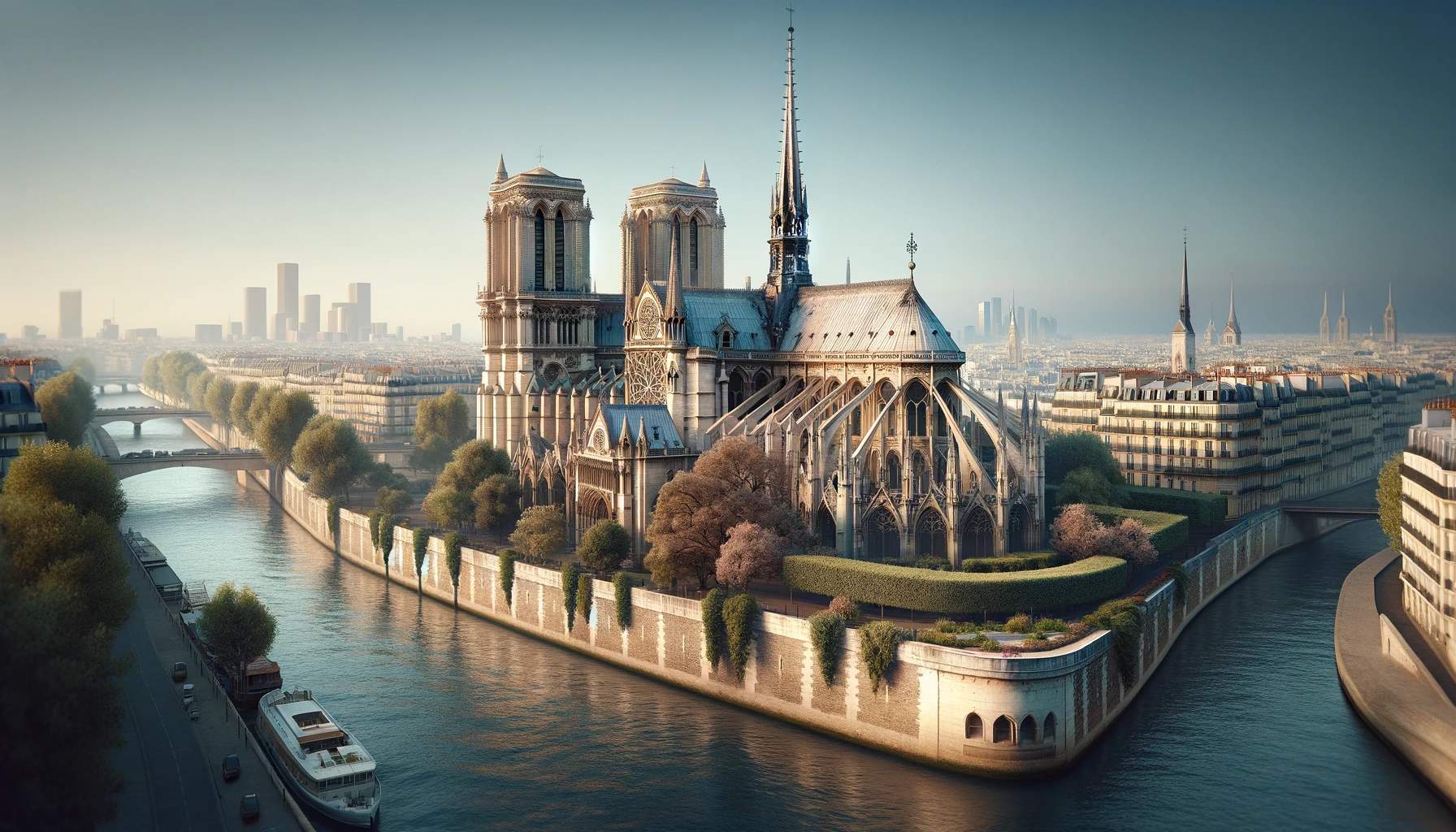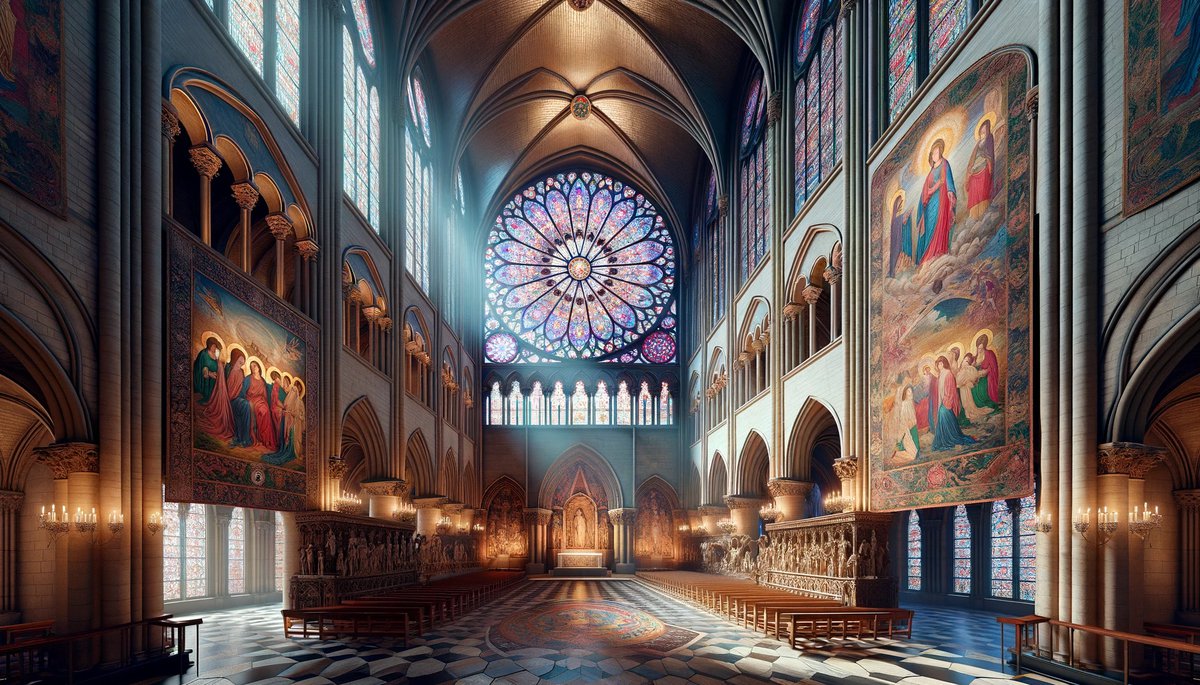Home>Arts and Culture>Where Is The Notre-Dame Cathedral
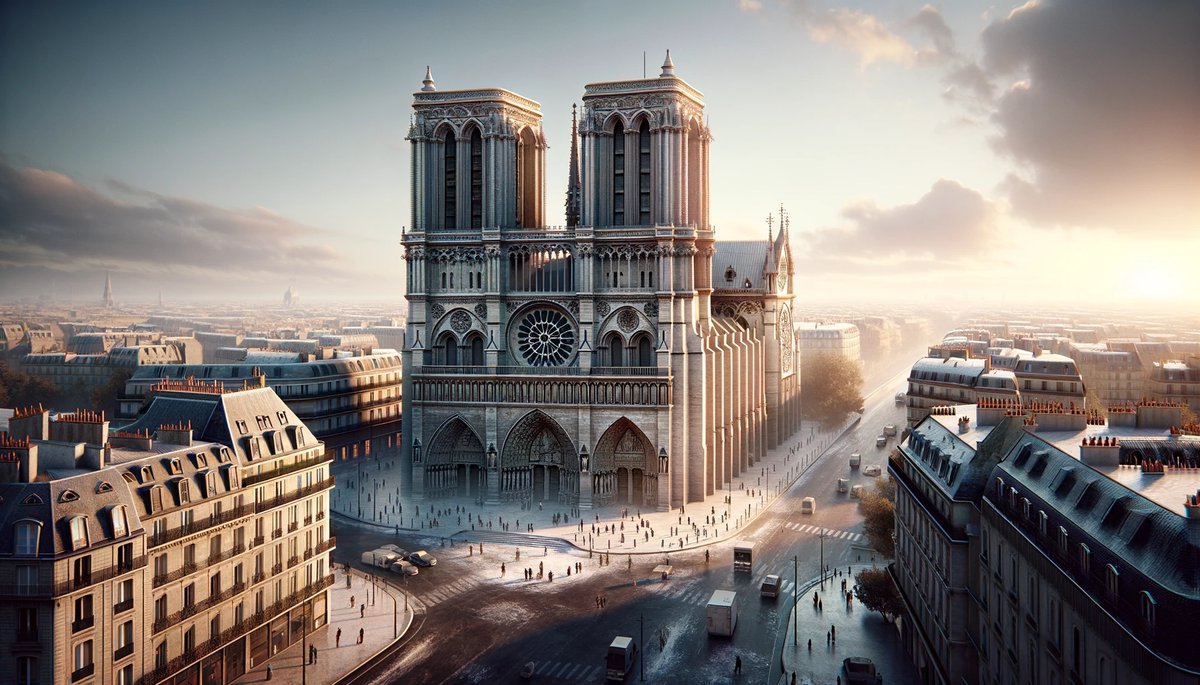

Arts and Culture
Where Is The Notre-Dame Cathedral
Published: February 16, 2024
Jason DeRose, Managing Editor at Christian.net, uses his expertise in religion and journalism to deepen understanding of faith's societal impacts. His editorial leadership, coupled with a strong academic background, enriches the platform’s diverse content, earning him recognition in both journalism and religious circles.
Discover the rich history and cultural significance of the Notre-Dame Cathedral, a must-see landmark for arts and culture enthusiasts. Explore its iconic architecture and timeless beauty.
(Many of the links in this article redirect to a specific reviewed product. Your purchase of these products through affiliate links helps to generate commission for Christian.net, at no extra cost. Learn more)
Table of Contents
Introduction
The Notre-Dame Cathedral, a timeless symbol of Paris, stands as a testament to the ingenuity and artistry of humanity. This architectural marvel has captured the hearts and minds of people around the world, drawing millions of visitors each year to marvel at its grandeur. The cathedral's rich history, breathtaking design, and enduring significance make it a cultural treasure of immeasurable value.
The Notre-Dame Cathedral, also known as Notre-Dame de Paris, is a masterpiece of French Gothic architecture that has withstood the test of time for over 850 years. Its construction began in 1163 and was completed in 1345, showcasing the dedication and craftsmanship of countless artisans and builders. The cathedral's soaring spires, intricate rose windows, and majestic flying buttresses are a testament to the skill and vision of the architects and craftsmen who brought this monumental structure to life.
This iconic cathedral has been a silent witness to centuries of history, surviving wars, revolutions, and the passage of time. Its hallowed halls have echoed with the prayers of kings and commoners alike, serving as a spiritual sanctuary and a beacon of hope for all who have sought solace within its walls. The Notre-Dame Cathedral has transcended its role as a religious edifice to become a symbol of resilience, unity, and the enduring power of human creativity.
As a cultural landmark of global significance, the Notre-Dame Cathedral has left an indelible mark on art, literature, and popular culture. Its presence in countless works of art, literature, and film attests to its enduring allure and the profound impact it has had on the collective imagination of humanity. The cathedral's timeless beauty and historical significance continue to inspire awe and reverence, drawing visitors from every corner of the globe to witness its magnificence firsthand.
In the following sections, we will delve deeper into the captivating history, awe-inspiring architecture, and current status of the Notre-Dame Cathedral, shedding light on its enduring legacy and the ongoing efforts to preserve this architectural treasure for future generations to cherish and admire.
Read more: Where Is The Notre Dame Cathedral Located
History of the Notre-Dame Cathedral
The history of the Notre-Dame Cathedral is a tapestry woven with the threads of time, craftsmanship, and faith. Construction of this iconic edifice began in 1163, during the reign of King Louis VII, and spanned over 180 years, culminating in its completion in 1345. The cathedral's inception was a monumental undertaking, driven by a collective vision to create a place of worship that would stand as a testament to the glory of God and the skill of its creators.
The architectural marvel was crafted by a legion of skilled artisans, stonemasons, and craftsmen who dedicated their lives to bringing this grand vision to fruition. The cathedral's design reflects the pinnacle of French Gothic architecture, characterized by its soaring spires, intricate rose windows, and ornate sculptures adorning its façade. Each element of the cathedral was meticulously crafted, imbuing the structure with a sense of divine grandeur and timeless beauty.
Throughout its storied history, the Notre-Dame Cathedral has borne witness to pivotal moments in the annals of France. It has hosted coronations, royal weddings, and state funerals, serving as a backdrop to the pageantry and solemnity of these historic events. The cathedral's significance transcends its religious function, embodying the spirit of a nation and the resilience of its people through times of triumph and turmoil.
The enduring legacy of the Notre-Dame Cathedral extends beyond its architectural splendor. It has inspired countless works of art, literature, and music, becoming a muse for creative minds across the centuries. The cathedral's presence in the works of Victor Hugo, particularly in his novel "The Hunchback of Notre-Dame," has cemented its place in the literary canon and captured the imaginations of readers worldwide.
However, the Notre-Dame Cathedral also bore witness to tragedy on April 15, 2019, when a devastating fire engulfed its iconic spire and ravaged its roof. The world watched in collective anguish as this beloved symbol of Paris faced destruction. Yet, amidst the ashes and charred remnants, hope emerged as a global outpouring of support and solidarity rallied behind the cathedral's restoration.
The history of the Notre-Dame Cathedral is a testament to the enduring spirit of human creativity, faith, and resilience. It stands as a living chronicle of the triumphs and tribulations of the human experience, a testament to the enduring legacy of this architectural masterpiece.
Architecture and Design
The Notre-Dame Cathedral stands as a paragon of Gothic architecture, a testament to the ingenuity and artistry of its creators. Its design, characterized by soaring spires, intricate rose windows, and majestic flying buttresses, embodies the pinnacle of medieval craftsmanship and architectural innovation.
The cathedral's facade is adorned with a profusion of sculpted figures and ornate decorations, each intricately carved to depict biblical narratives, saints, and mythical creatures. The west front, in particular, features three elaborately adorned portals, each serving as a visual chronicle of religious teachings and moral allegories. The sculptures adorning the portals are a masterful fusion of art and theology, inviting visitors to contemplate the spiritual narratives they depict.
The interior of the Notre-Dame Cathedral is a symphony of light and stone, with towering columns and ribbed vaults reaching skyward. The nave, transept, and choir are bathed in the ethereal glow of stained glass windows, their vibrant hues casting a kaleidoscope of colors upon the sacred space. The cathedral's rose windows, renowned for their intricate tracery and radiant hues, are marvels of medieval craftsmanship, serving as celestial beacons that illuminate the interior with a divine luminescence.
The cathedral's iconic spire, though tragically lost in the 2019 fire, was a crowning achievement of Gothic architecture. Rising to dizzying heights, the spire was a testament to the medieval builders' audacious vision and technical prowess. Its loss was deeply felt, yet plans for its reconstruction stand as a testament to the enduring legacy of this architectural masterpiece.
The Notre-Dame Cathedral's design is a harmonious fusion of form and function, a sacred space that transcends the earthly realm and invites contemplation of the divine. Its architectural elements, from the intricately carved sculptures to the celestial windows that adorn its walls, converge to create an awe-inspiring sanctuary that has captivated the hearts and minds of visitors for centuries.
The Notre-Dame Cathedral's architecture and design are a testament to the enduring legacy of Gothic artistry and the profound impact of this architectural masterpiece on the cultural landscape of Paris and the world at large.
Location of the Notre-Dame Cathedral
Nestled on the eastern half of the Île de la Cité in the heart of Paris, the Notre-Dame Cathedral commands a majestic presence along the banks of the Seine River. Its prime location places it at the geographical and historical epicenter of the city, where centuries of Parisian history converge in a symphony of architectural splendor and cultural significance.
The Île de la Cité, one of the two remaining natural islands in the Seine within the city of Paris, serves as the venerable setting for the Notre-Dame Cathedral. This island, with its rich tapestry of historical landmarks and vibrant urban life, provides an idyllic backdrop for the cathedral's timeless grandeur. The cathedral's strategic placement on the Île de la Cité not only underscores its prominence within the city but also accentuates its role as a focal point of Parisian heritage and identity.
Surrounded by quaint cobblestone streets and charming riverside promenades, the Notre-Dame Cathedral exudes an aura of timeless elegance and spiritual reverence. Its proximity to other iconic landmarks, such as the Palais de Justice and the Sainte-Chapelle, further enriches the cultural tapestry of the island, creating a captivating tableau of architectural marvels and historical significance.
The Notre-Dame Cathedral's location also affords visitors breathtaking views of the Seine River and the enchanting cityscape of Paris. The cathedral's imposing silhouette, with its soaring spires and majestic facade, stands as a sentinel overlooking the bustling metropolis, inviting pilgrims and tourists alike to embark on a journey through time and faith.
The surrounding neighborhood, with its charming cafes, artisanal boutiques, and lively markets, offers a delightful juxtaposition to the cathedral's solemn grandeur. Visitors can meander through the winding streets, immersing themselves in the vibrant pulse of Parisian life before being drawn back to the cathedral's hallowed precincts, where history, art, and spirituality converge in a harmonious embrace.
The Notre-Dame Cathedral's location on the Île de la Cité serves as a testament to its enduring significance within the cultural tapestry of Paris. Its timeless presence amidst the ebb and flow of urban life encapsulates the essence of the city, inviting visitors to partake in a journey through history, beauty, and the enduring legacy of human creativity.
Current Status and Restoration Efforts
The Notre-Dame Cathedral, a revered symbol of Parisian heritage, faced a moment of profound reckoning on April 15, 2019, when a devastating fire engulfed its iconic spire and ravaged its roof. The world watched in collective anguish as this architectural masterpiece, with its centuries-old history and cultural significance, stood imperiled by the relentless flames. However, amidst the ashes and charred remnants, a global outpouring of support and solidarity rallied behind the cathedral's restoration.
In the wake of the fire, a monumental effort was launched to stabilize the structure and commence the painstaking process of restoration. The immediate focus was on securing the cathedral's fragile stone vaults and preserving its priceless relics and artworks. The heroic efforts of firefighters and preservation experts prevented the complete collapse of the cathedral, safeguarding its sacred interior from further devastation.
The aftermath of the fire galvanized an unprecedented wave of philanthropy and commitment to restore the Notre-Dame Cathedral to its former glory. Pledges of support poured in from around the world, with individuals, corporations, and governments offering their resources and expertise to aid in the restoration efforts. The global community's response underscored the cathedral's profound impact as a cultural touchstone that transcends national boundaries and unites people in a shared commitment to preserve human heritage.
The restoration of the Notre-Dame Cathedral represents a monumental undertaking that encompasses a myriad of disciplines, from architectural conservation to historical preservation. A team of skilled artisans, architects, and craftsmen has been assembled to meticulously assess the damage, catalog the surviving elements, and chart a path forward for the cathedral's renewal. Cutting-edge technologies, including 3D modeling and laser scanning, are being employed to create a comprehensive digital record of the cathedral's structure, aiding in the meticulous reconstruction process.
The restoration efforts also extend to the cathedral's iconic spire, which was tragically lost in the fire. Plans for its reconstruction have sparked fervent discussions among architects and preservationists, with proposals ranging from faithful replication to innovative reinterpretations that honor the cathedral's legacy while embracing contemporary design principles. The debate surrounding the spire's restoration reflects the profound significance of the Notre-Dame Cathedral and the weight of responsibility borne by those entrusted with its preservation.
As the restoration of the Notre-Dame Cathedral unfolds, it serves as a poignant reminder of the resilience and enduring spirit of human creativity. The cathedral's restoration is not merely a physical endeavor but a testament to the collective will to safeguard our shared cultural heritage for future generations. It stands as a beacon of hope and renewal, inspiring a global community to unite in the noble pursuit of preserving a timeless symbol of human ingenuity and faith.
Read more: Notre Dame Cathedral: Who Is Buried There
Conclusion
The Notre-Dame Cathedral, with its rich history, awe-inspiring architecture, and enduring legacy, stands as a testament to the indomitable spirit of human creativity and resilience. From its humble beginnings in the 12th century to its enduring presence as a global cultural icon, the cathedral has transcended the boundaries of time and space, captivating the hearts and minds of people from every corner of the globe.
As the restoration efforts continue to unfold, the Notre-Dame Cathedral serves as a poignant symbol of hope and renewal, inspiring a global community to unite in the noble pursuit of preserving our shared cultural heritage. The outpouring of support and solidarity following the devastating fire underscores the cathedral's profound impact as a cultural touchstone that transcends national boundaries and unites people in a shared commitment to safeguard human heritage.
The enduring legacy of the Notre-Dame Cathedral extends far beyond its physical structure. It lives on in the hearts of those who have been moved by its timeless beauty, in the works of art and literature it has inspired, and in the collective memory of humanity. The cathedral's restoration represents a testament to the resilience and enduring spirit of human creativity, a testament to the collective will to safeguard our shared cultural heritage for future generations.
As the cathedral rises from the ashes, it stands as a beacon of hope and renewal, inviting visitors to bear witness to the enduring legacy of human ingenuity and faith. The Notre-Dame Cathedral continues to inspire awe and reverence, drawing visitors from every corner of the globe to witness its magnificence firsthand. Its timeless beauty and historical significance serve as a reminder of the enduring power of human creativity and the profound impact of cultural landmarks on the collective imagination of humanity.
In the heart of Paris, amidst the ebb and flow of urban life, the Notre-Dame Cathedral stands as a testament to the enduring spirit of human creativity, faith, and resilience. Its restoration is not merely a physical endeavor but a testament to the collective will to safeguard our shared cultural heritage for future generations. The cathedral's enduring legacy will continue to inspire awe and reverence, serving as a timeless symbol of human ingenuity and the enduring power of faith.
